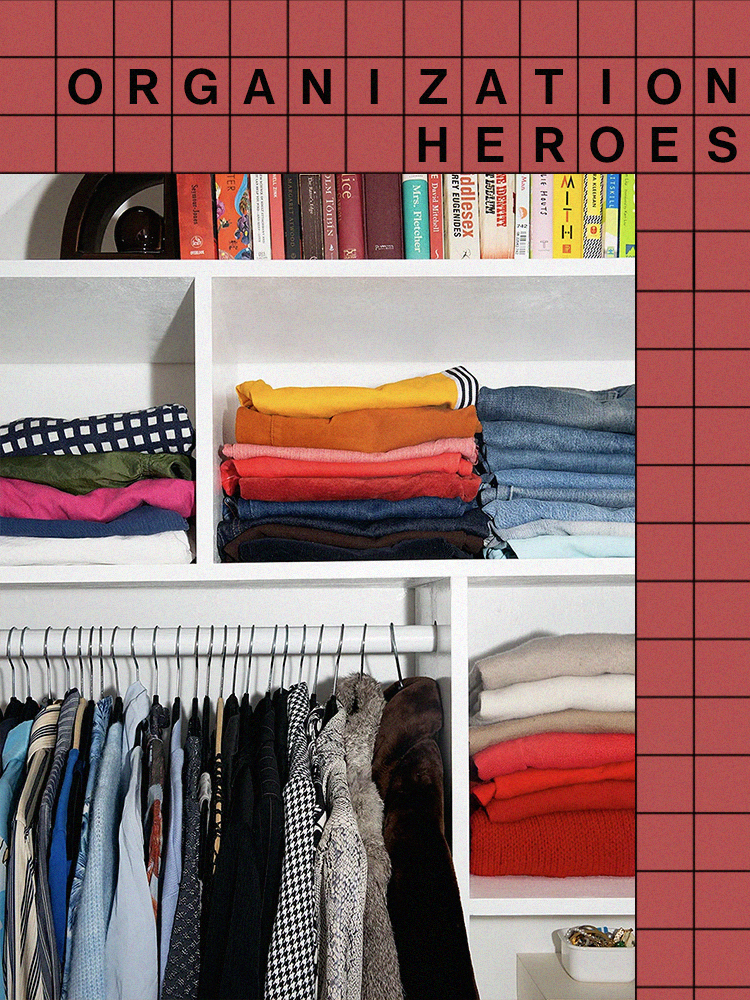We may earn revenue from the products available on this page and participate in affiliate programs.
Meet our Organization Heroes, holy grail products and strategies for getting—and staying—tidy.
Every fall and spring without fail, I grab all my seasonal closet overflow and throw it in a suitcase without much thought. Come winter, stringy sandals and Birkenstocks get tangled up with bikini straps, floral skirts, and cutoff denim shorts. In early summer, bulky snow boots and puffy parkas are squished together and zipped out of sight. It’s a time-efficient method, sure, but far from a practical one. The contents usually end up scattered on the floor before a big trip, and some items lose their shape after being stashed away for months.
After watching Get Organized With The Home Edit on Netflix, I knew that something had to change. Surely there was a better way to organize my cramped New York City closets without having to store away half my wardrobe. One tip that stuck with me: the idea of back stock. Typically reserved for pantries, this constitutes the excess or double-up items that can live elsewhere in the house (or on seldom touched higher shelves) until they’re ready to be used. What if my closet could have back stock, too, for seasonal items I’m not wearing at the moment? I turned to pro organizer Ese Crossett, founder of Tidylosophy, to help. Here’s what I learned.
Categorize Your Closet
“Start by making piles on the bed or rug and categorizing them,” says Crossett. Once I created these clusters—one for summer skirts, one for winter knits, another for loungewear—it was a lot easier to identify how much closet space (in my bedroom and elsewhere) I’d have to dedicate for each and how accessible they needed to be, depending on the time of year.
Be Ruthless About What You Keep
Purging is an important step to closet organizing. Marie Kondo advises to only keep what brings you joy. While that’s a good starting point, I wanted to go a step further. After discarding any torn or damaged clothes on Crossett’s recommendation, I moved on to her next suggestion: creating a donate pile for anything I hadn’t worn at least once during the season. In the end I had a sizable amount of items I was happy to part with, which I dropped off at a nearby Salvation Army.
File Everything Away (Also by Category!)
Working with the areas I had identified for each category of clothes, I filled my bedroom closet (organized by color, then favorites) until it was full. This made room for 10 pairs of jeans, seven chunky sweaters (or about double that for thin ones), and 26 pairs of shoes (plus the small selection I allow myself to keep by the front door).
I also cleaned out a few underused, hard-to-reach areas of other closets in my apartment, pulling out winter bedding and throws on higher shelves to store skirts, shorts, and T-shirts, and creating a new dedicated workout spot to keep things like wrist weights and resistance bands. Everything leftover went into a “maybe” pile.
Bundle Off-Season Items
In the end, very few items in my maybe pile were things I still considered keeping, but Crossett has a solution for excess clothing, too, and it doesn’t involve luggage: fabric storage bags. “I like the ones that have transparent front windows so I always know what’s inside,” she notes. I used a variety of stackable and hanging ones for summer dresses and skirts and another for eveningwear, which I tucked at the back of my closet, keeping my current winter wardrobe front and center.
As for the extra pairs of shoes I didn’t want to part with just yet, Crossett recommended labeled under-bed storage. The shallowness of the containers means I can keep each pair neatly ordered and not piled on top of one another.
Label Everything
I’m not one to pull out a label maker very often, but Crossett urged me to clearly identify each section of my closets so I wouldn’t be tempted to create chaos in my newfound order. (This tiny Bluetooth one comes recommended by Domino’s style editor, Julia Stevens.) So how many days till spring?
